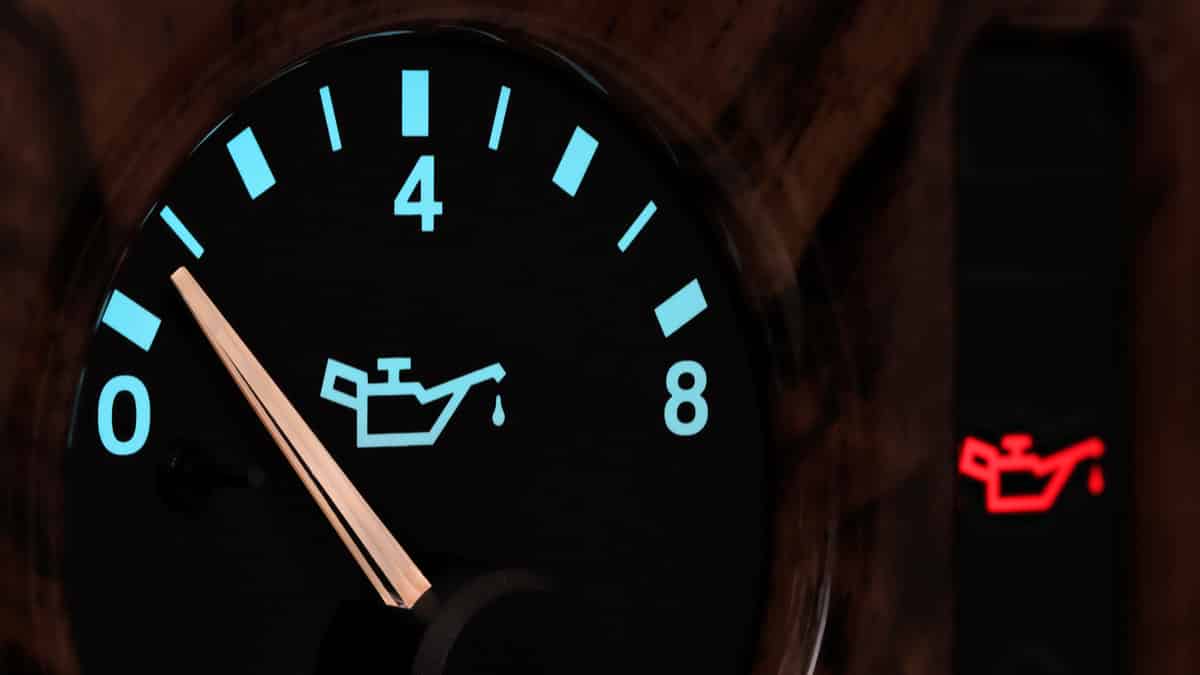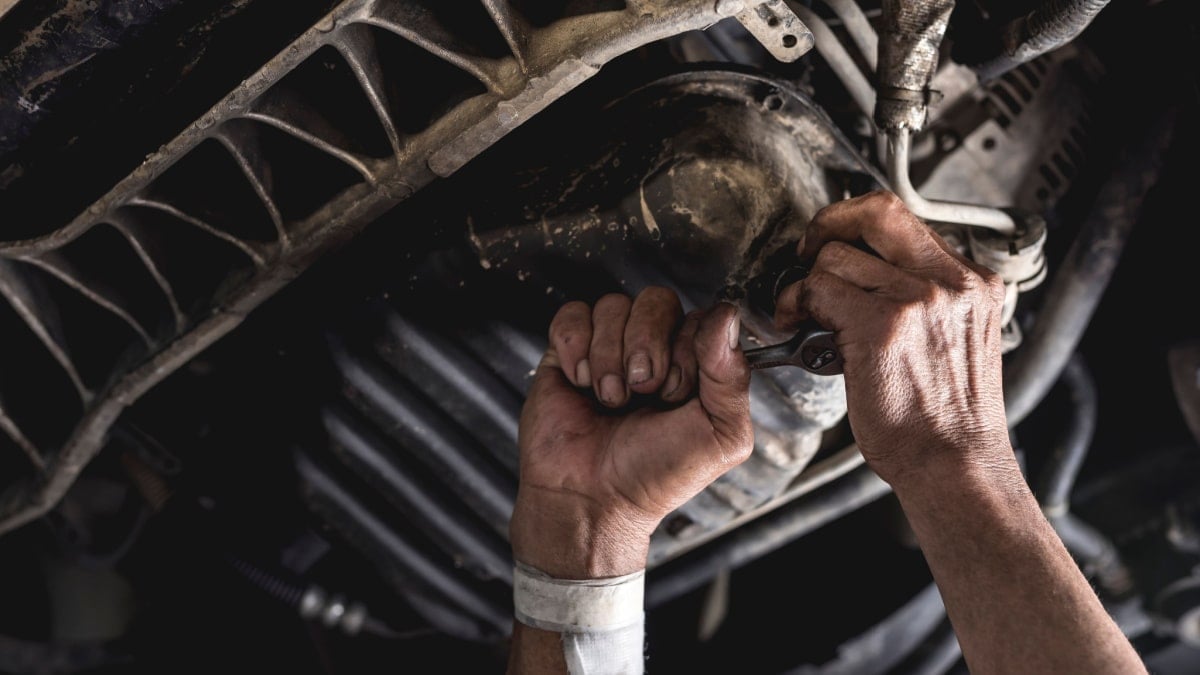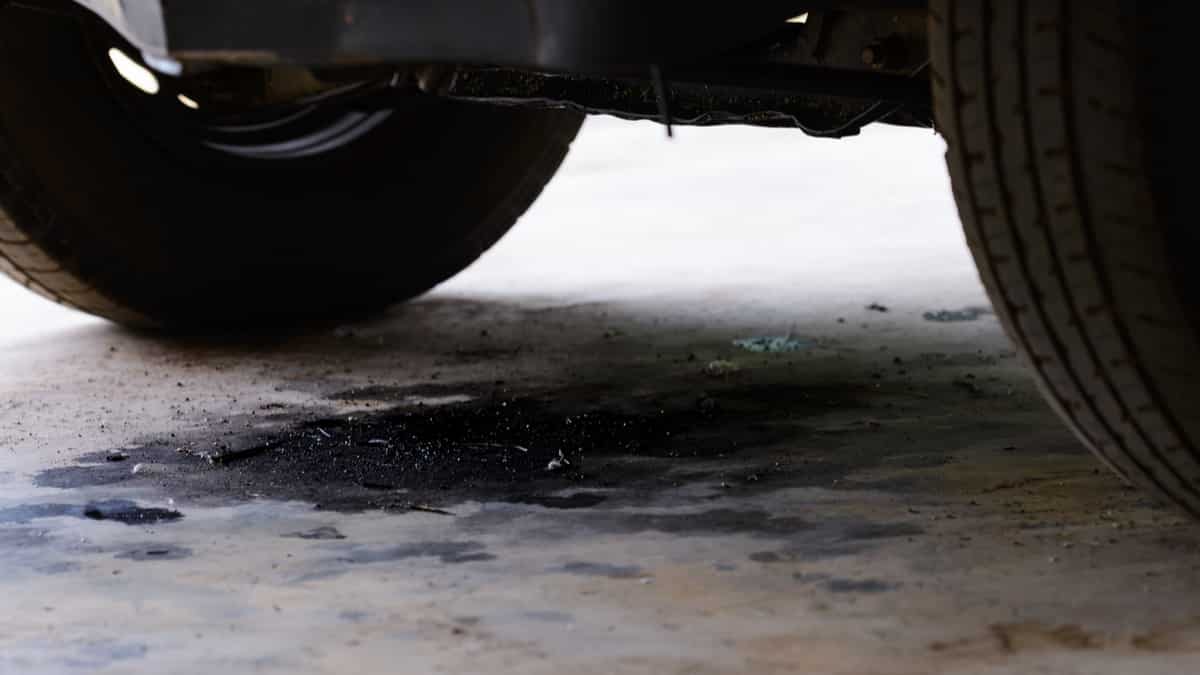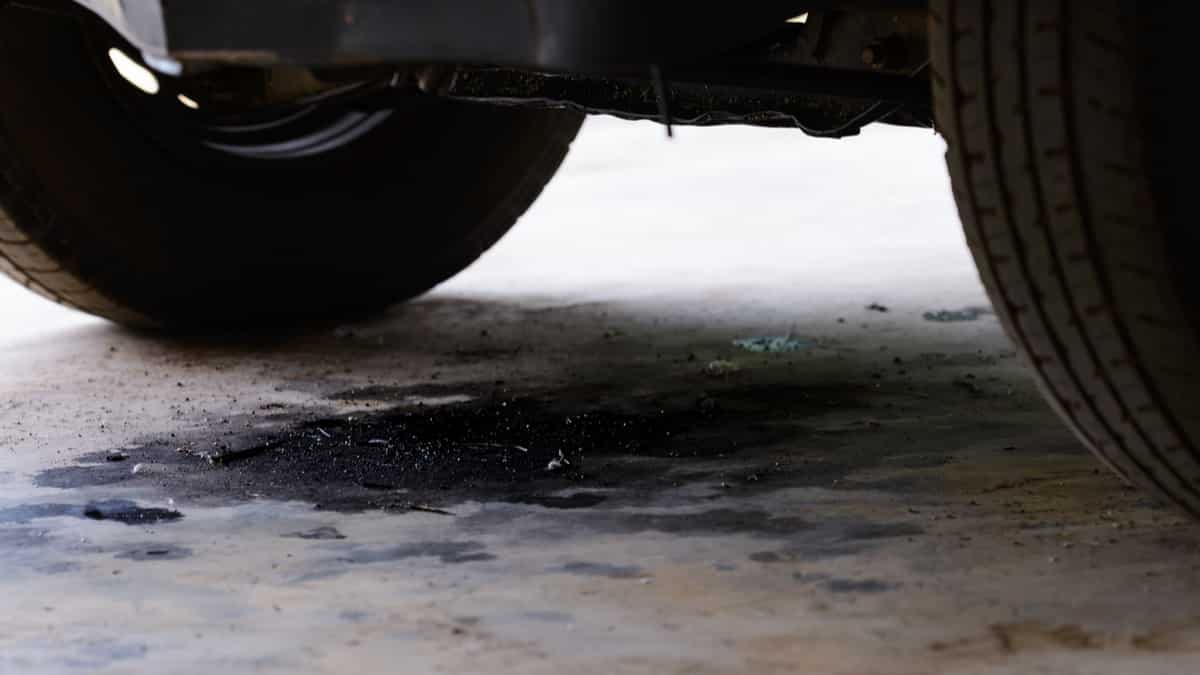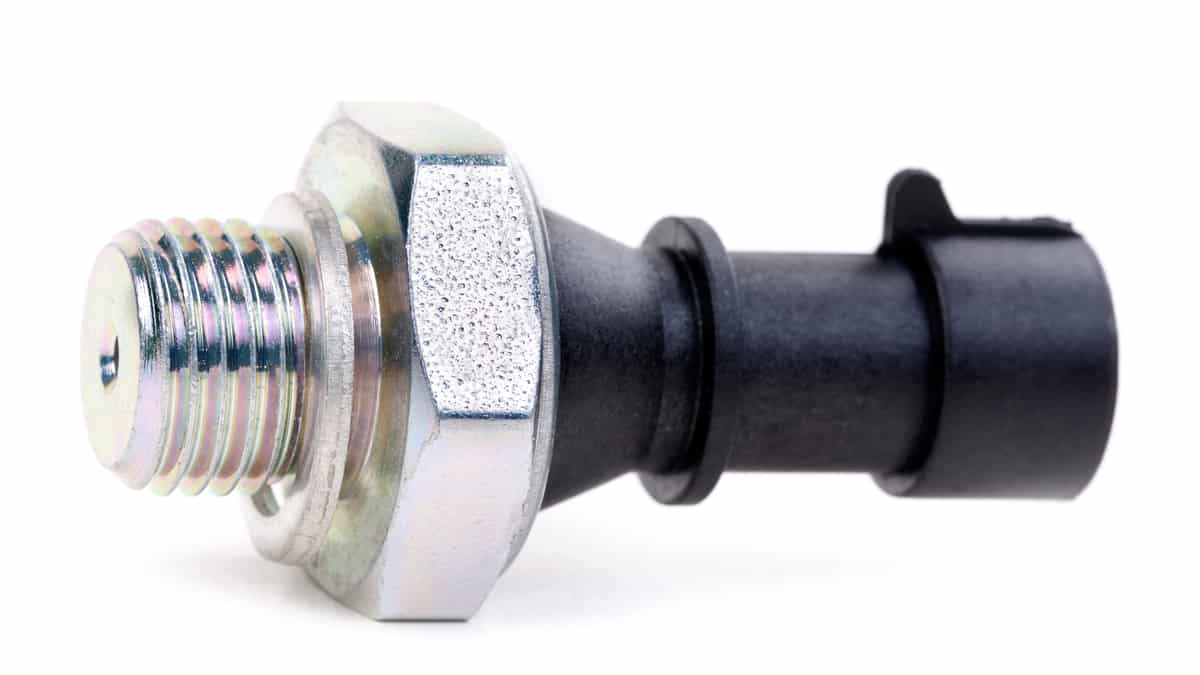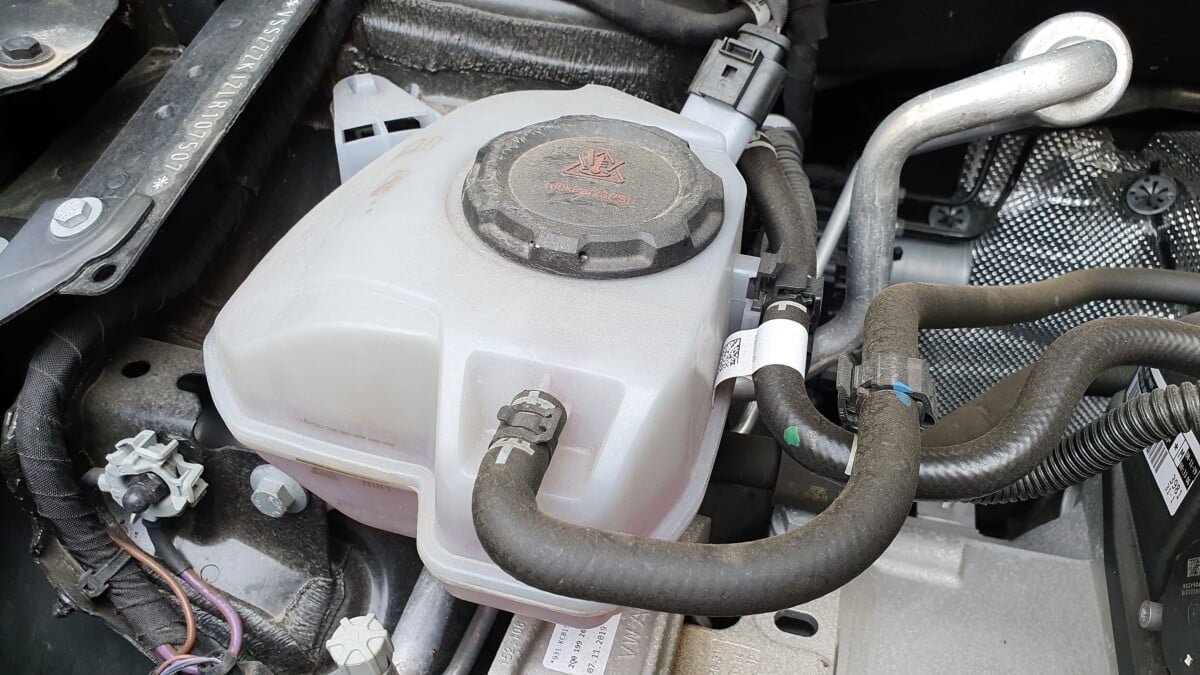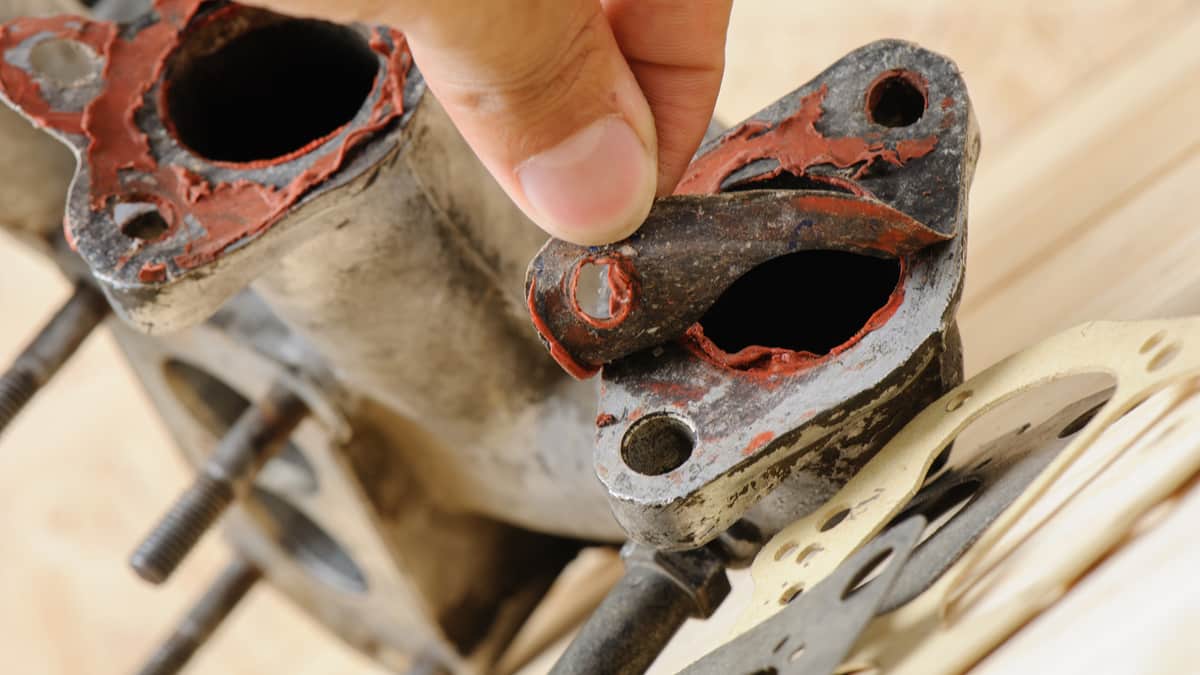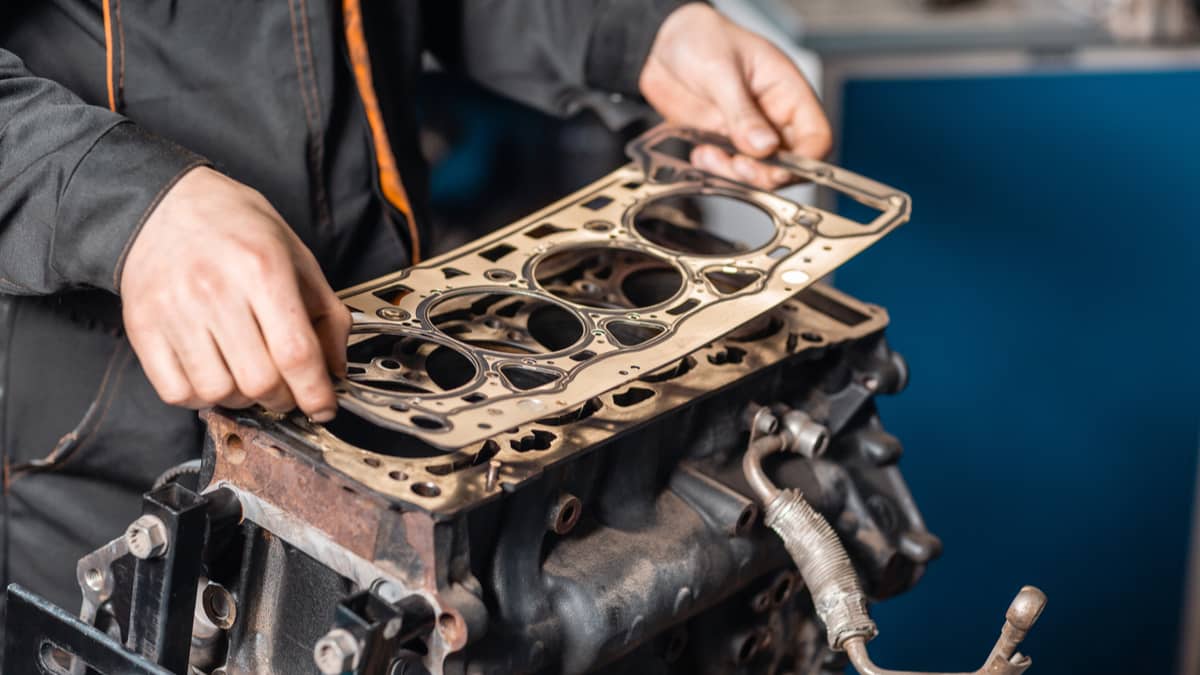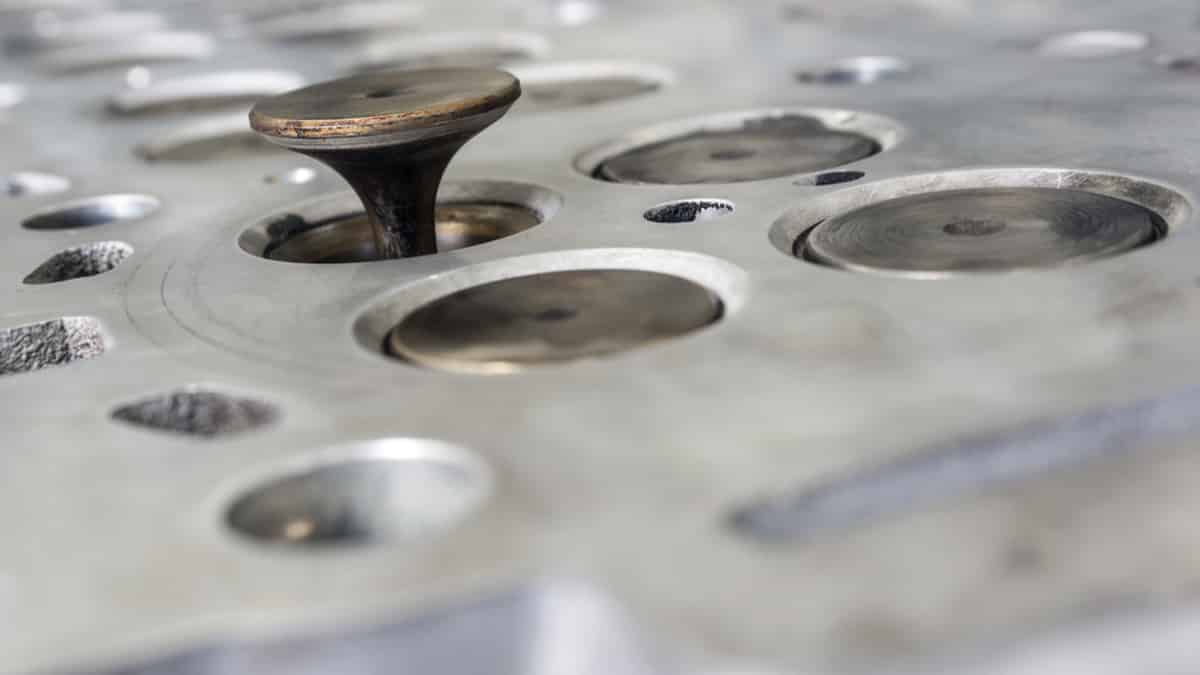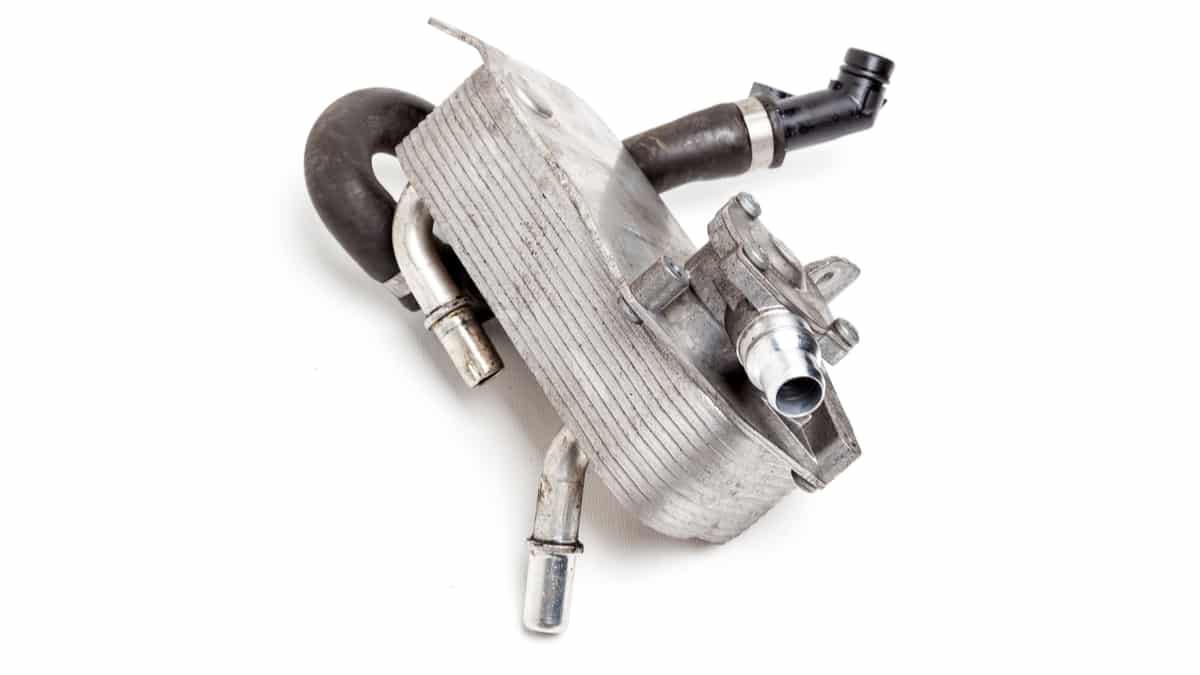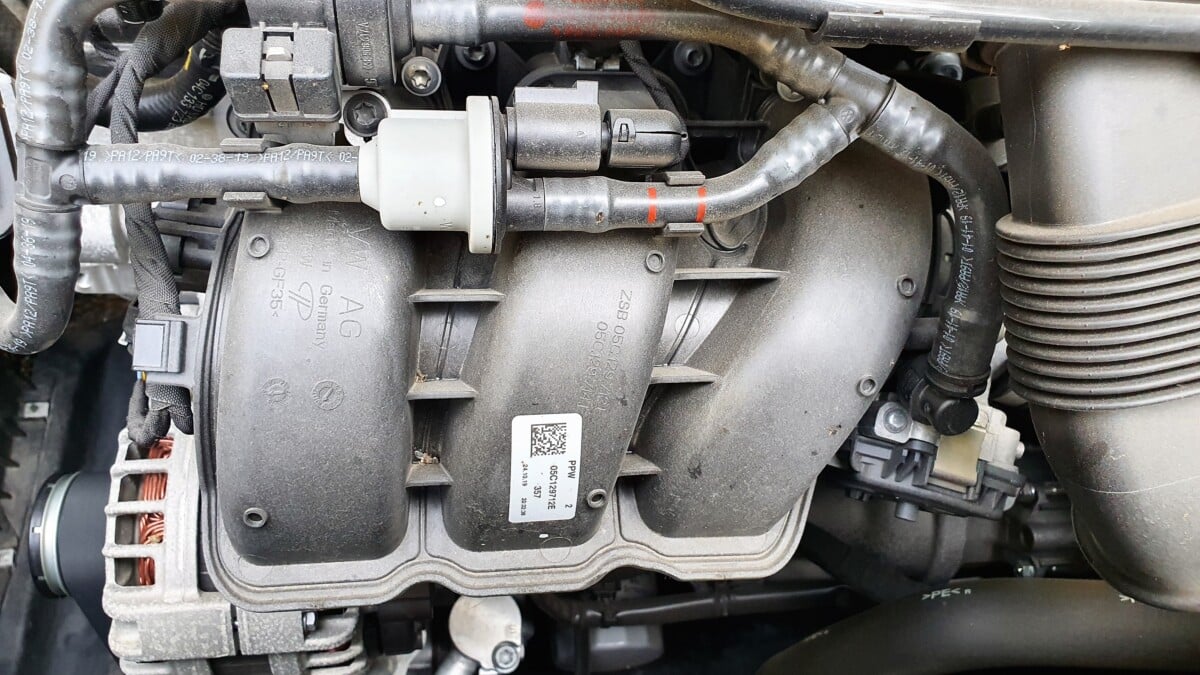Oil can leak from a multitude of places, leading to catastrophic engine failure if the levels get too low. That’s why you want to know the symptoms of a leaking oil pan gasket, so you can resolve the situation quickly.
In this guide, we cover the top signs that an oil pan gasket is leaking. We also show you what the oil pan gasket is, discuss where it is located and give you steps on inspecting the oil pan gasket. At the end of this information, we estimate the average cost of an oil pan gasket replacement and answer your biggest questions.
Symptoms Of A Leaking Oil Pan Gasket
When the oil pan gasket is leaking, you may see a puddle or stain under the vehicle. Additionally, you may see an oil warning light because of the low fluid level. There may also be an oil coating on the undercarriage and you may smell burning oil, which can be alarming.
Here are some more details about these symptoms.
1. Oil Puddle or Stain
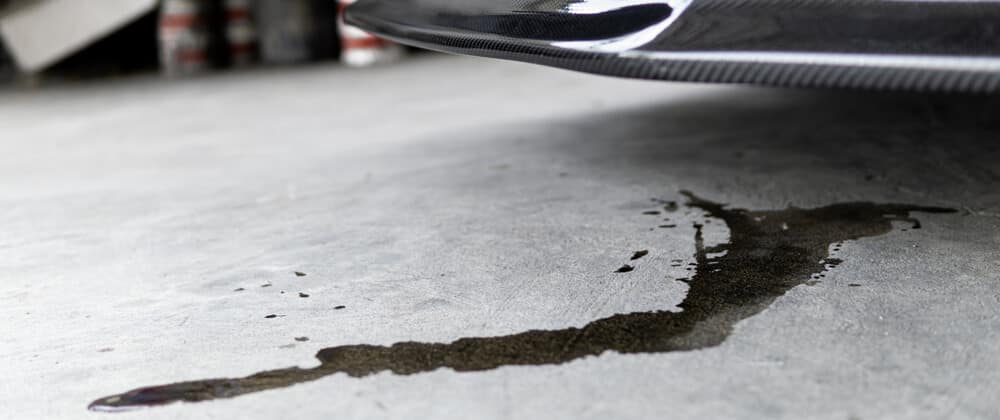
The tell-tale sign that oil is leaking occurs when you see a puddle or stain under the car. However, this oil drip could be coming from nearly anywhere, so you have to determine the cause. A puddle or stain of oil doesn’t automatically mean that the oil pan gasket is bad. We discuss more about how to figure this out a little later.
The reason that a faulty oil pan gasket causes a leak is that the rubber starts to deteriorate. This rubber is susceptible to damage because of the excessive heat of the engine. Instead of being able to hold the oil in its place, the fluid begins seeping through. As the damage becomes worse, so does the amount of oil that’s leaking.
RELATED: 10 Causes of Engine Oil Leaks
2. Low Oil Level
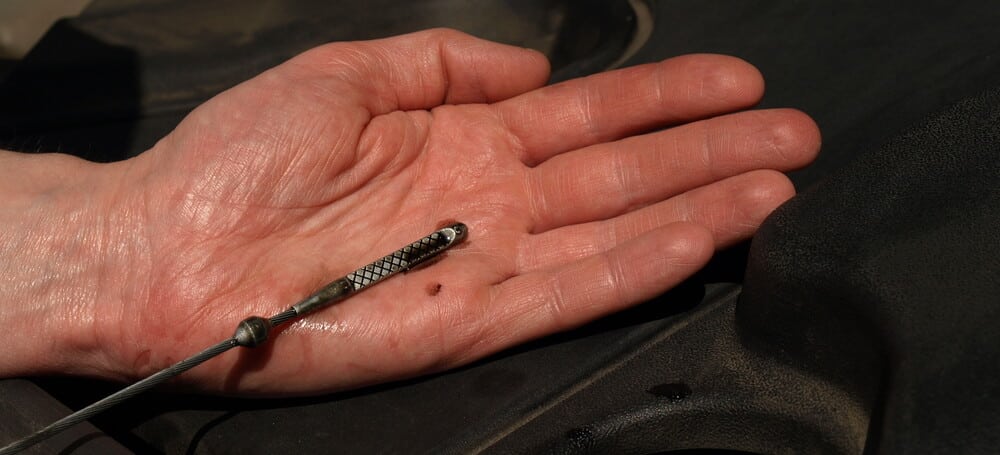
There’s a chance that the oil pan gasket leak is so small that it’s barely noticeable. If that’s the case, the oil level probably doesn’t drop fast.
However, larger leaks are going to create a drop in oil levels. You may need to continue topping off the engine until you repair the problem.
3. Oil Warning Light
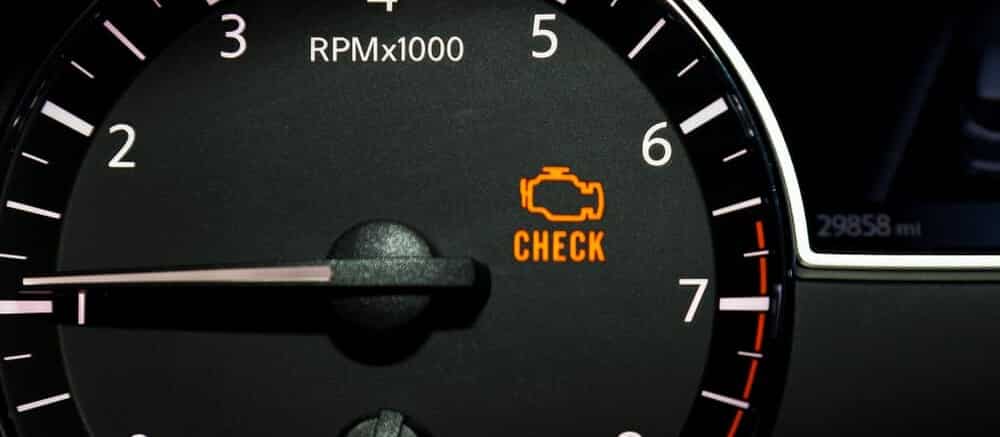
When the oil levels get low enough, your car may illuminate the oil warning light. This light indicates a serious loss of oil, as most don’t register for a small drop. In fact, when this light comes on, you should stop driving immediately because the oil levels are likely at the critical mark.
Thankfully, most oil pan gasket leaks are going to be substantial enough to have this problem immediately. Yet, over time it could become this bad, putting your engine in serious danger.
4. Burning Oil Smell
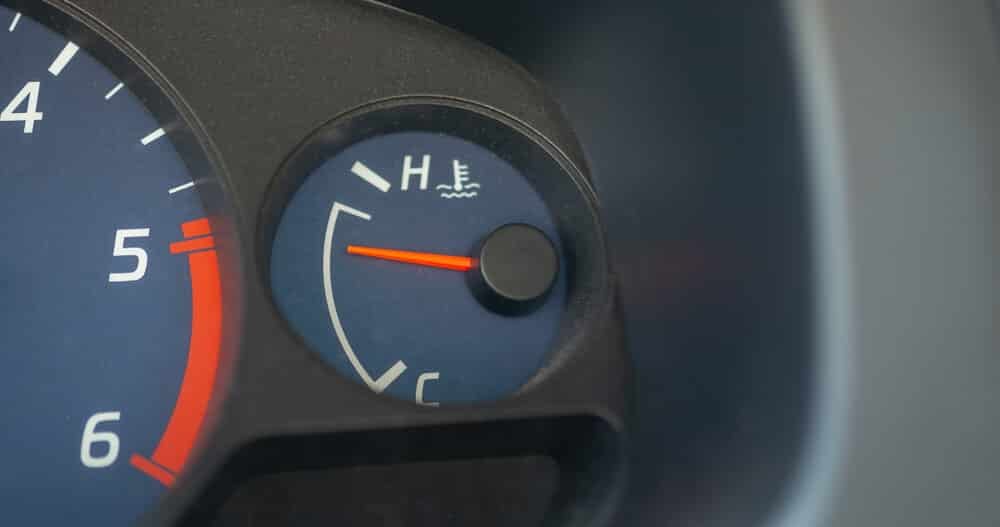
If the oil pan gasket is leaking, you may start smelling burning oil. This won’t be the same type of smell from the engine burning oil through consumption, but more of a fresh oil smell that’s being heated to higher temperatures and burning off.
Oil leaking from the gasket often ends up on the hot exhaust parts because it’s blown back while driving. Considering some exhaust parts reach temperatures of up to 1,000 degrees Fahrenheit, there’s also a serious risk of a car fire. It’s not a chance you want to take.
As the leak increases, so will the burning oil smell. It can get to the point of making you sick while you drive if it infiltrates the cabin.
5. Oil Coated Undercarriage
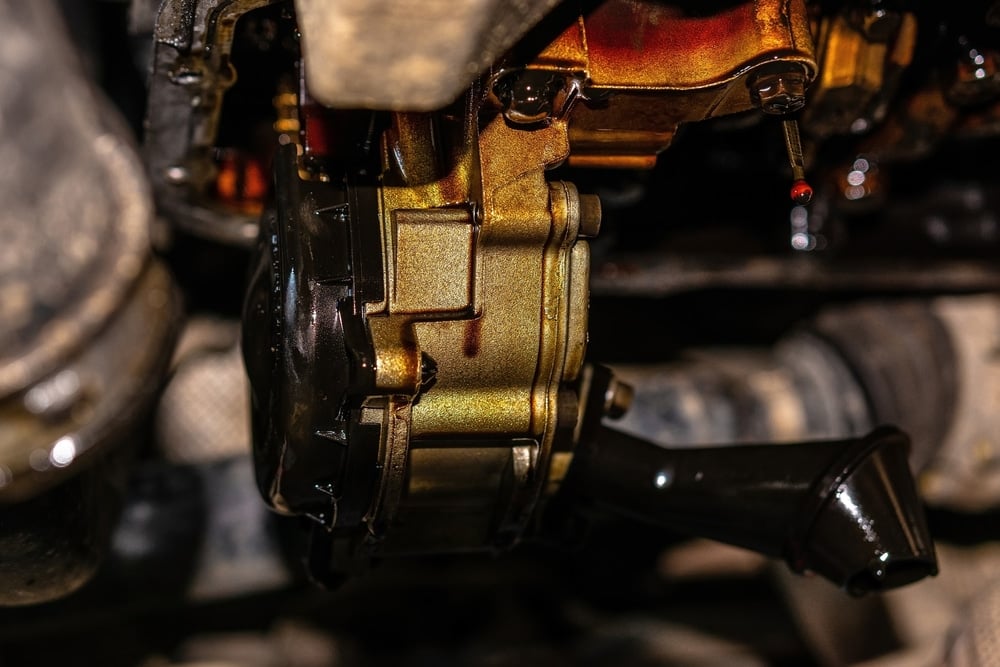
As previously touched on in the last section, a major oil pan gasket leak is going to cause a spray to coat the undercarriage. This condition is known as blowback, and it is caused by the wind while driving at higher speeds.
Air rushes below the vehicle, sweeping any oil toward the back from the defective oil pan gasket. The level of oil spread depends on how bad the oil leak is. If it’s severe, you could see oil splattered just about everywhere, making it more difficult to determine where it’s coming from.
This oil coating is one of the main reasons for the strong odor we talked about. It gets onto the exhaust and starts to burn because of the extreme temperatures.
What Is An Oil Pan Gasket?
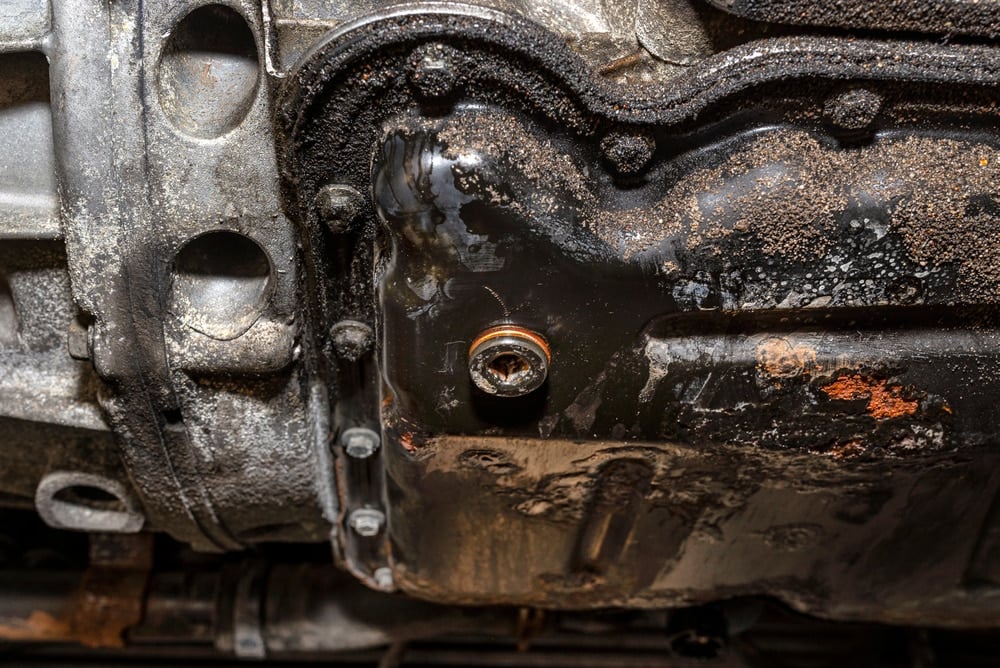
The oil pan gasket is responsible for sealing the oil pan to the bottom of the engine block. With this gasket in place, oil can’t leak out as it is moving between the pan and the motor. There are two types of gaskets used in today’s car engines. Your vehicle may have a liquid gasket or a rubber gasket.
Usually, the type of gasket depends on the material used to construct the oil pan. In many cases, automakers use a formed rubber gasket to line the pressed steel pan, while a liquid gasket is used with aluminum pan types. While the oil pan gasket is different from other types of engine gaskets, it serves the same purpose. All gaskets, including the head gasket and valve cover gasket, are designed to keep various parts and fluids sealed and separate from contamination.
Where Is The Oil Pan Gasket Located?
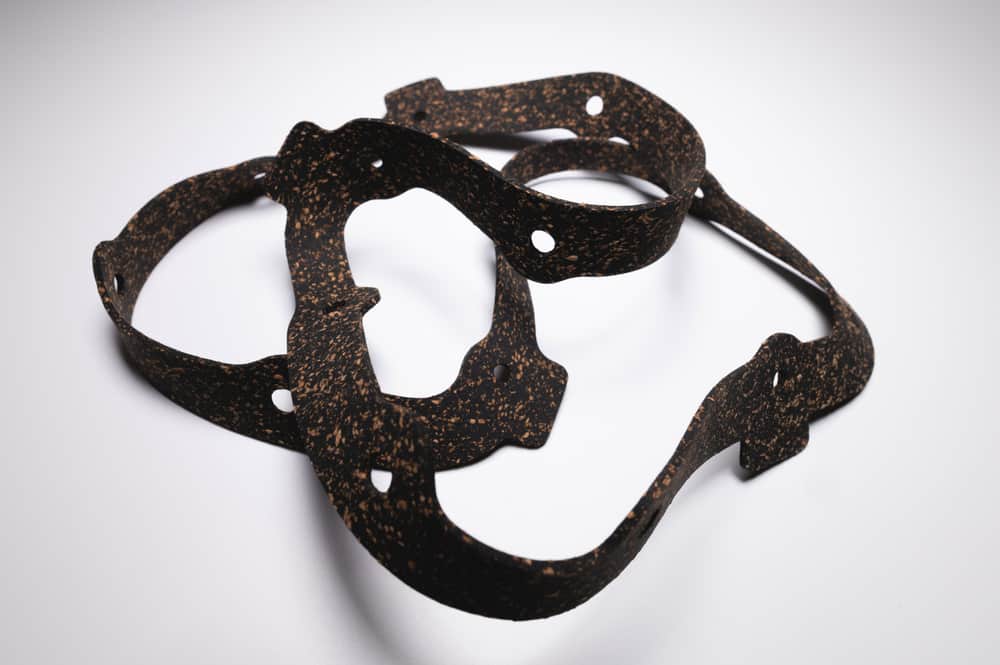
The oil pan gasket is housed in the oil pan. It’s the part that helps connect it to the engine block. Therefore, you will find the oil pan gasket located between the engine block and the oil pan.
This gasket creates a seal, allowing for expansion and contraction to deal with the heat that’s produced by the motor. The cushioned gasket also prevents damage from the vibrations coming out of the engine.
How Do You Inspect An Oil Pan Gasket?
It can be extremely difficult to see where oil is leaking from under a car, especially if there’s significant blowback occurring while driving. To determine the cause, you want to perform a visual inspection.
Often, the first step is to put a piece of cardboard under the car to see where it is dripping from. However, it may not be dripping while the car is stationary, meaning it may not drip on the cardboard.
If that doesn’t help you find it, we recommend cleaning off the engine and oil pan with a special degreaser. You can rinse down the undercarriage and make sure there’s no oil showing. Once some oil appears, you can trace its trail back to the highest point to find the leak.
If these steps don’t help you find the source of the oil leak, it’s best to visit with a mechanic. A specialist could use pressure testing or UV light to find the cause of the leak.
How Much Does It Cost To Replace An Oil Pan Gasket?
On average, expect to spend between $400 and $600 to replace the oil pan gasket professionally. The cost of labor is the most expensive aspect, ranging from $200 to $400. The parts may only cost $100 to $200, making it cheaper to repair on your own if you have the skills.
Costs are determined by the type of vehicle you drive. Some are much harder to replace than others, so the labor costs will be higher. Additionally, the labor rates in your area will change the overall expense.
If you are accustomed to performing your own car maintenance and repairs, you may be able to replace the oil pan gasket yourself. There are some similar steps to changing the oil, except you must also drop the pan and install a new gasket, so there’s an added level of difficulty involved. In some engines, it is much harder to access the oil pan, so those jobs may not be made for the novice.
If you choose to tackle it yourself, you will need the new parts, the right type and amount of motor oil to put back in the system, a new oil filter, a wrench, sockets, some rags and the appropriate sealant.
The best way to avoid an oil pan gasket replacement is to take care of the vehicle. If you perform regular oil changes, you help to keep the gasket lubricated and in good condition, which ensures it won’t fail prematurely.
Is an oil pan gasket leak serious?
Yes, the leak can become serious if it is causing the oil level to drop. Running an engine without the right amount of oil causes the motor to seize. You could be looking at permanent engine failure, which could require either a rebuild or replacement, both of which cost a good chunk of money and are labor-intensive to perform.
Can you drive with a leaking oil pan gasket?
If the oil pan gasket has a minor leak, you may be able to continue driving for a short time. However, that minor leak could turn into something severe at any time. It’s best to stop driving as soon as you recognize the leak to prevent it from getting any worse. You want to have it repaired before you start driving normally.
How many hours does it take to replace the oil pan gasket?
A professional mechanic may need 1.5 to 2.5 hours to replace the oil pan gasket in most vehicle types. If you want to change it yourself and don’t have professional equipment or experience, you should give yourself four to six hours to replace it, just in case.
Is an oil pan gasket easy to replace?
If are accustomed to doing your own car maintenance and repairs, you may be able to change the oil pan gasket, depending on where it’s located. There are also some potential problems you could run into, such as bending the oil pan while you remove it. If you use a screwdriver or mallet on the pan, you could also damage it during the removal. If you aren’t comfortable removing it, you should call a mechanic instead.
Will stop-leak help an oil pan gasket leak?
If the oil pan gasket is cracked and dry, which is causing a leak, there are some stop-leak products that may work. However, these stop-leak products can also cause further damage to the engine, so you must use caution. If you prefer to try these products, do your homework first to ensure you choose a reputable brand.
By paying attention to the symptoms of a leaking oil pan gasket, you head off potential problems with the engine. While it’s not inherently dangerous to have a small leak from the gasket, you don’t want to let it continue or it will get worse. Leaving the engine without the right amount of oil is putting you at risk for a complete failure.
You can prevent the oil pan gasket from wearing out by taking good care of the vehicle. Changing the oil regularly helps to ensure it remains lubricated and in good condition. If you aren’t sure how to care for the vehicle or you need help getting the pan gasket changed, it’s best to contact a professional mechanic.
Categories: Engine Oil

